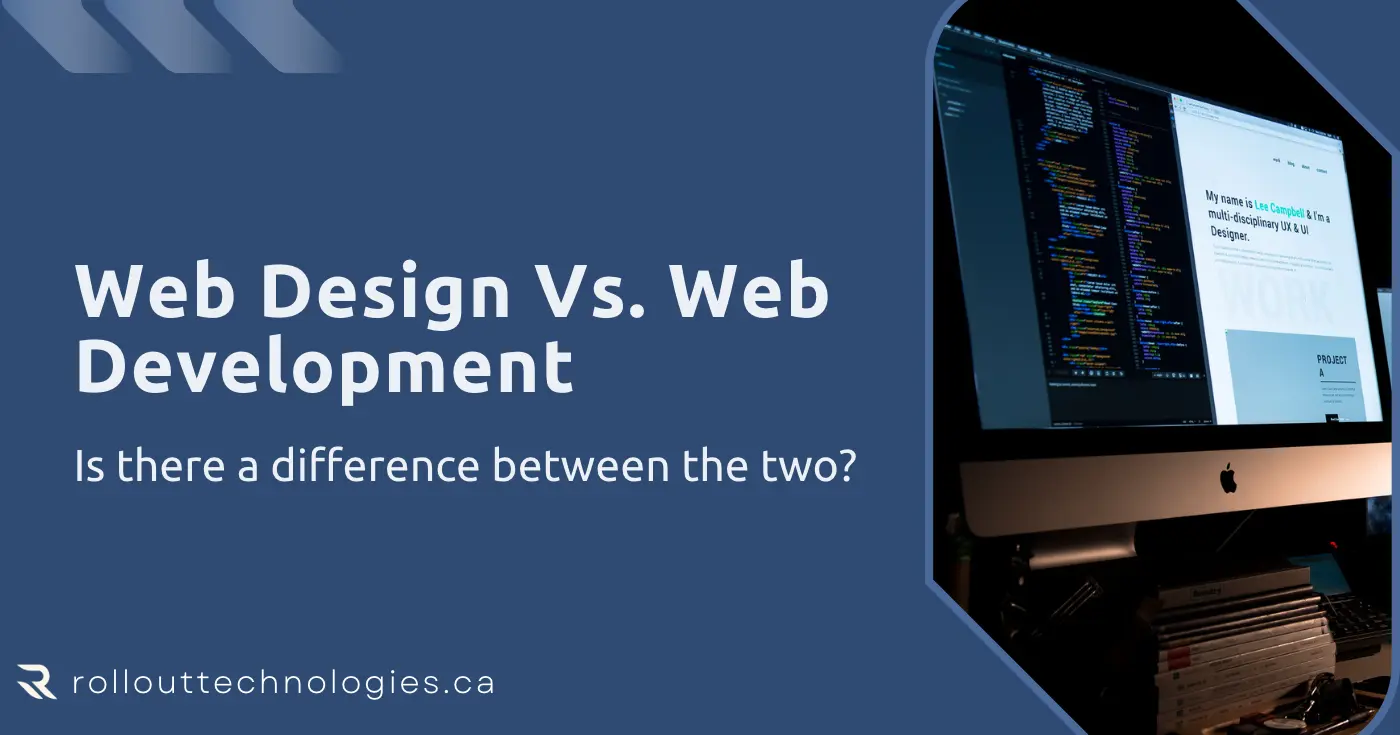A complete guide for a business owner. Learn opportunities, steps and challenges involved in custom website development.
Custom website development involves creating a unique website tailored to the specific needs and goals of a business or organization. This approach typically involves a team of web developers who work closely with clients to design and build the website from scratch.
The process of custom website development generally includes designing the layout and user interface and developing and implementing features such as authentication, e-commerce, role management, and document management with the help of custom databases.
A website design and development company specializes in creating custom websites which allow full customization and control over the end result, and it will be created and developed exactly to the client’s specifications and preferences.
Custom website design costs can vary depending on the complexity of the project, the features required, and the experience of the company or developer. However, this approach can be more time-consuming and expensive compared to other approaches, such as developing a website using pre-built templates or content management systems (like WordPress)
Let’s first learn a little bit about template-based website development to understand the custom website development approach better.
Template-based website development
Template-based website development involves using pre-designed templates as a foundation for building a website. Professional designers usually create these templates, can be purchased ready-made and can be customized to some extent to fit the specific needs of the client.
This approach is generally faster and more cost-effective than custom website development, but it may not offer the same level of customization or flexibility.
Types of Web Applications
Custom website development is often used for a variety of complex and specialized website and web application types, to list few:
Dynamic web applications
Which require frequent updates and the ability to display different content based on user interactions or other external factors. Take the example of Yahoo Finance.
E-Commerce web applications
These types of websites require a lot of features such as e-commerce functionality, shipment creation, shipment tracking, order management, email communications, marketing tool integrations, forms, and more. Needless to say, examples other than Amazon
Complex web applications
Which require more advanced functionality such as real-time communication, data processing, and complex user interactions. Example: Twitter
Portal web applications
Such website acts as a communication platform between two parties/entities. These require particular functionality and design elements to cater specific demographics or user groups. A good example of that would be CRA (Canada Revenue Agency) portal.
Website Tailored for Specific Audiences
These websites are designed and developed to appeal a specific group of users or customers i.e. social media websites, corporate websites, healthcare websites, etc. Take AllTrails as an example.
Security First Approach applications
These types of website require advanced security measures to protect sensitive user data and comply with industry regulations. Example: 1Password.
Third-party integrations
Such websites require a significant level of customization and specific programming to link the website or application with other systems and platforms. An overwhelmed example of this will be Zapier.
Now, Let’s jump into the overall process from the client’s point of view for custom website development!
Process of Custom Website Development
Custom website development mainly involves a series of steps to ensure that the final result meets the specific needs and goals of the client. These steps can include:
Brainstorming
This is the initial phase where the software development company and the client will discuss the overall goals and objectives of the website and gather requirements for the project. This step involves understanding the business, the target audience, and their needs.
Scoping
This phase includes defining the scope of the project, outlining the specific features and functionality that will be included in the website, and determining a timeline and budget for the project.
Wire framing
This step involves creating a detailed blueprint of the website pages, navigation, and user flow. This will give a clear picture of the website’s structure, and it will be used as a guide for the design and development phases.
Custom Design and Flow Creation
This involves working with a designer to create a unique look and feel for the website, as well as planning the navigation and user flow. This can take more time than using pre-built templates, as it requires more brainstorming, planning, architecture design and UI/UX design work.
Development
This involves creating a website from the ground up, utilizing several programming languages and frameworks. This can take more time than using pre-built templates, as it requires bespoke development work. This step usually involves the following 3 steps and respective teams
Back-end Development
Back-end development refers to the process of creating a unique server-side logic and functionality for a website or web application, using a combination of programming languages, frameworks, and technologies such as PHP, Laravel, Spring Boot, Python, JavaScript, Ruby and more.
The back-end developer works closely with the front-end developer to ensure that the user interface is fully functional and integrated with the back-end system.
Front-end Development
Front-end development refers to the process of creating a unique user interface and user experience for a website, using a combination of different languages and frameworks like HTML, JavaScript, TypeScript, CSS, React, AngularJS etc.
The front-end developer works closely with the design team to create a visually appealing and user-friendly interface, and with the back-end developer to ensure that the interface is fully functional and integrated with the back-end system.
Specialized server/cloud infrastructure setup
Depending on the requirements of the website, a specialized server, automation scripts or cloud infrastructure may be required. This can add to the cost and time required for custom website development.
Testing
Finally, this steps invloves each and every functionality is working as expected independenttly and with their integration. This also involves testing UI/UX in different set of devices and browsers.
Benefits of Custom Website Development
Custom website development is often chosen in cases where a business or organization wants a unique website that can be fully customized to meet their specific objectives. Some of the benefits of custom website development include
Scalability & Flexibility
A custom-built website can be designed and built to scale with the growth of the business, making it easier to add new features as the business expands. This can help to ensure that the website can continue to meet the preferences of the business as it grows.
Ahead of competitors
A custom-built website can be designed to meet the specific needs of a business, which can help to set it apart from competitors. By having a unique and tailored website, a business can gain a competitive edge and stand out in the marketplace.
Personalized User Experience
Custom website development services include creating a unique design and functionality for a website to meet specific business need. These services can also include ongoing support and updates to ensure the website remains up-to-date and functional. This can result in a better user experience, improves conversion rates, and ultimately higher sales.
Branding
A custom website can be designed to align with a company’s existing brand guidelines, creating a consistent look and feel across all of the company’s digital assets. This can help to increase client trust and understanding, making the company more valuable.
SEO friendly
A custom website can be designed and built with search engine optimization (SEO) in mind, making it more likely to rank well in search engine results. This can help to increase visibility and drive more traffic to the website, which can lead to more sales and conversions.
Increased Security
Custom website development allows for the implementation of advanced security measures, helping to protect sensitive user data and comply with company and industry regulations.
Now, let’s dive into what Website development companies like Rollout Technologies can help you with this, what responsibilities they take
Responsibilities of Custom Web Development Companies
Understanding business goals
Software companies understands the client’s business goals and objectives by having few meetings and discuss short term and long term vision of the business
Brainstorm and architect the solution
They use their technical experties and architect the technical solution for the business in scalable, flexible and cost effective way. This also includes considerations for implementing security measures to protect the website and user data.
Designing and Branding
Website development companies not only develop the solution but also provide designing solution to the client to match their branding and voice. They creates a graphic element for the website, including the fonts, logos, colors, spacings, etc
Deployment and Maintenance
Once the website is developed, custom web development companies will provide a range of services, including maintenance and support to ensure that the website continues to function smoothly.
Helping Find Third-Party Integrations
A software development company can help you to find and integrate various marketing, sales, and operations tools and software into their website. This can include tools for analytics, email marketing, customer relationship management, and more. By integrating these tools, the business can improve its operations and performance.
Free Consultation
Free consultation is usually done to understand the client’s requirement and the company’s approach to the project. It also helps the client to get an idea of the cost and timeline of the project.
Conclusion
Custom website development can bring significant value to a business by providing scalability, flexibility, and a competitive edge by creating a personalized user experience.
It also helps improving security measures, the protection of sensitive user data, and the implementation of special features and capabilities that may not be available in pre-built templates or platforms.

![Mobile App Development: What to Know Before You Start [as a Business Owner]](https://rollouttechnologies.com/wp-content/uploads/2024/06/mobile-app-development-what-to-know-before-you-start.jpg)






